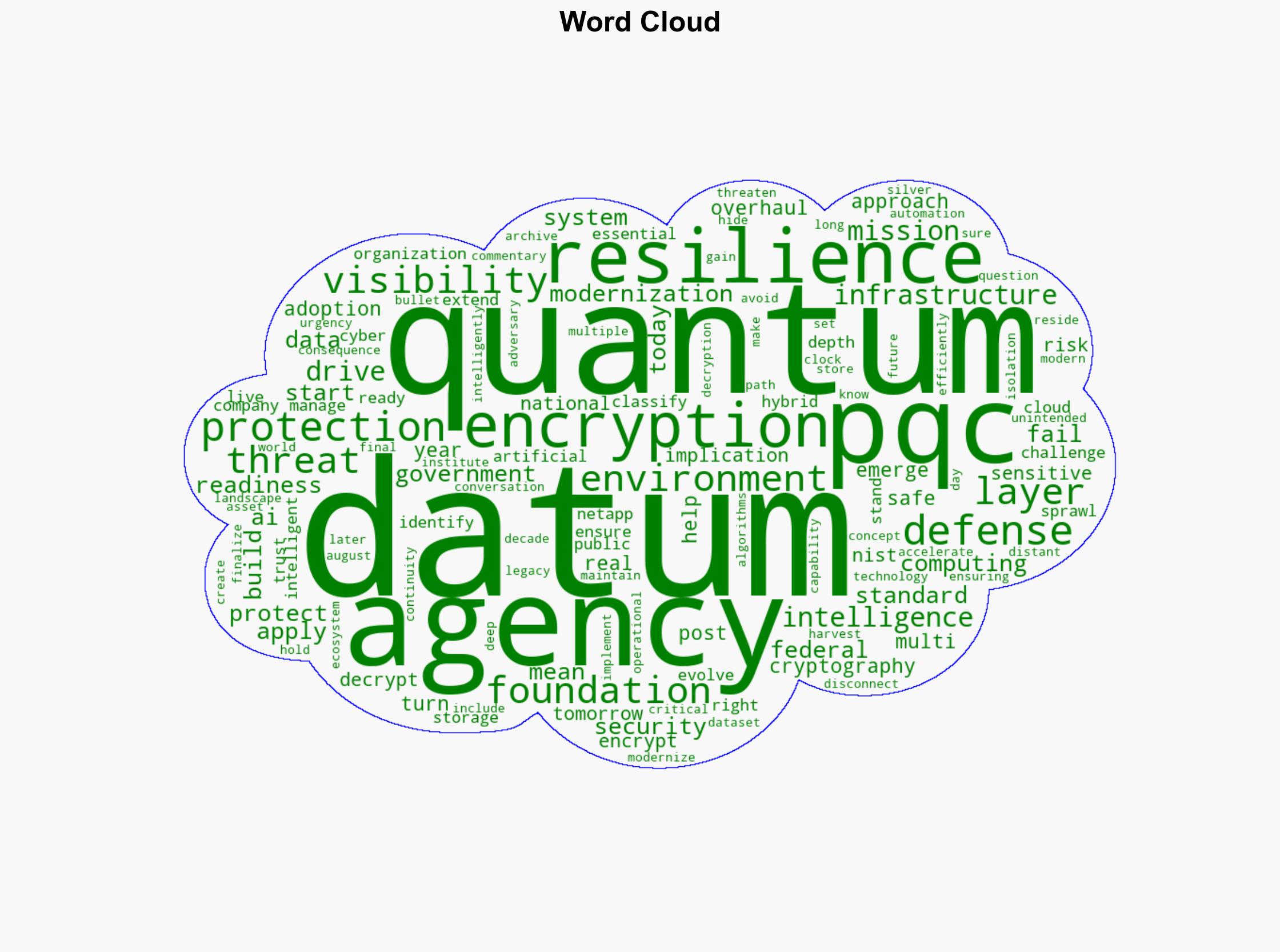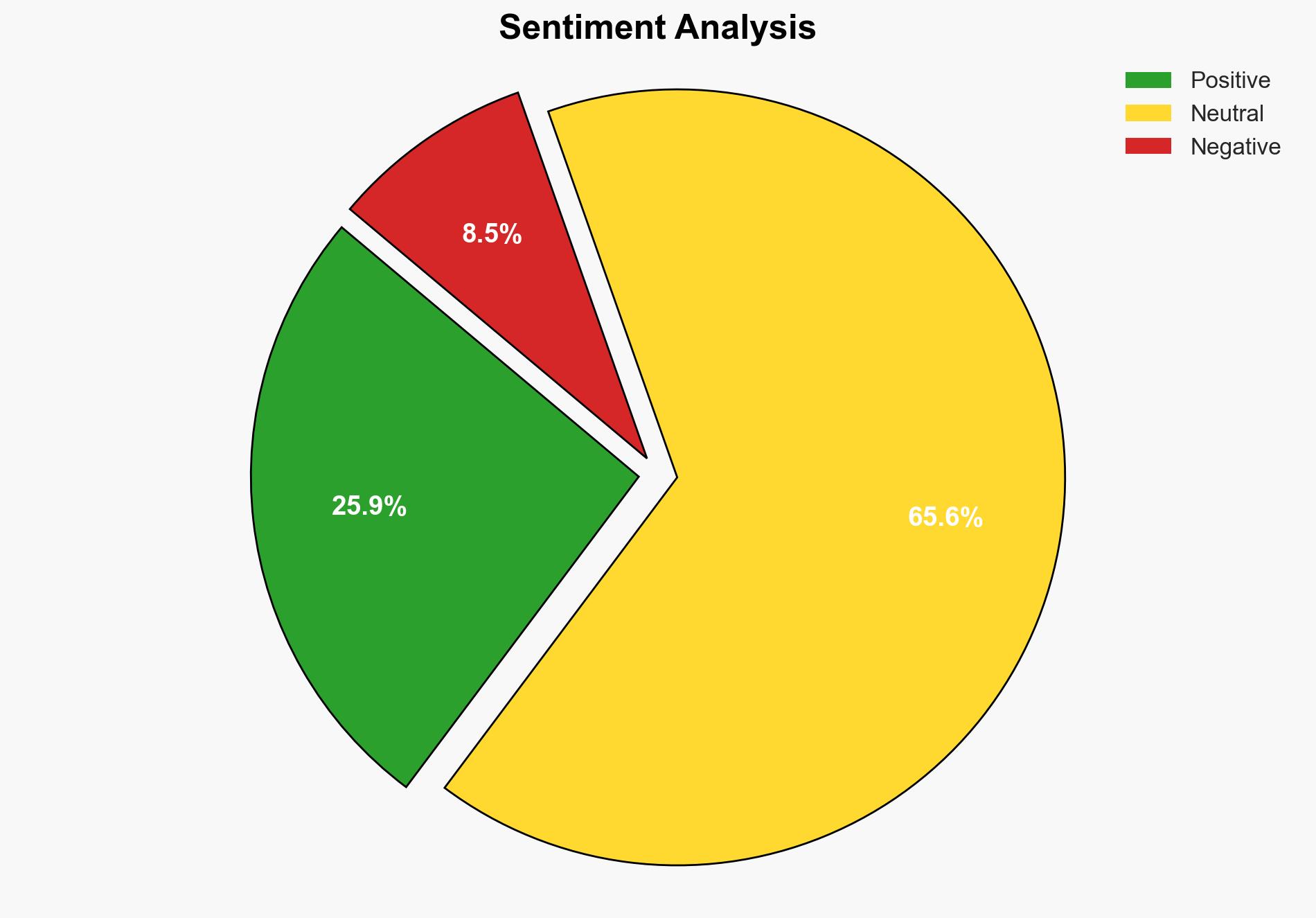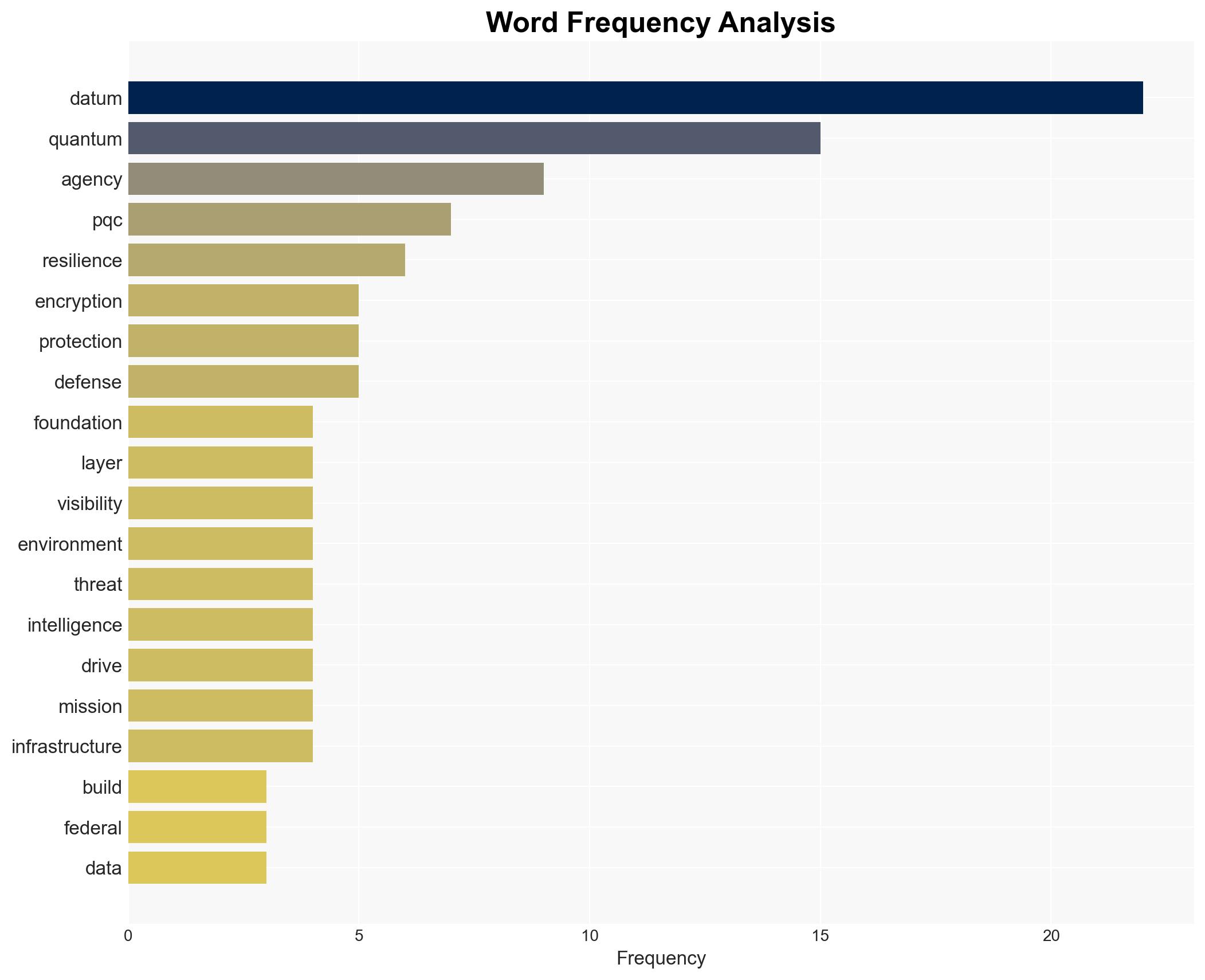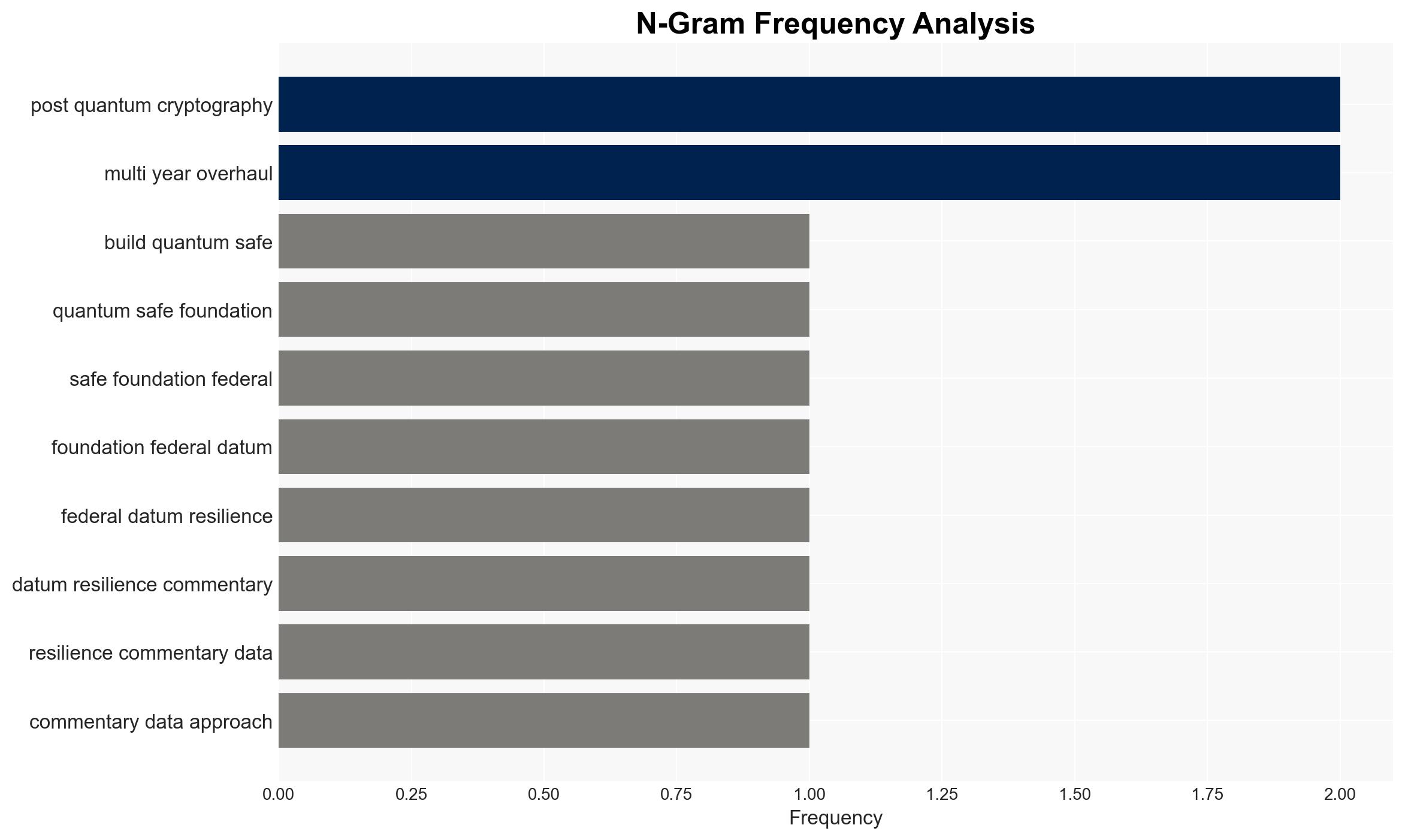Building quantum-safe foundations for federal data resilience – Nextgov
Published on: 2025-11-12
AI-powered OSINT brief from verified open sources. Automated NLP signal extraction with human verification. See our Methodology and Why WorldWideWatchers.
Intelligence Report: Building quantum-safe foundations for federal data resilience – Nextgov
1. BLUF (Bottom Line Up Front)
With a medium to high confidence level, the most supported hypothesis is that the federal government will need to adopt a phased approach to implementing post-quantum cryptography (PQC) to ensure data resilience. This approach should focus on prioritizing critical data assets and leveraging AI-driven solutions to enhance visibility and protection. Recommended actions include accelerating PQC adoption, enhancing data inventory processes, and integrating AI for proactive threat detection.
2. Competing Hypotheses
Hypothesis 1: The federal government will successfully implement PQC standards across all agencies, ensuring comprehensive data protection against future quantum threats.
Hypothesis 2: The federal government will face significant challenges in adopting PQC, resulting in partial implementation and leaving some data vulnerable to quantum threats.
Hypothesis 2 is more likely due to the complexity of federal data environments, existing legacy systems, and resource constraints. The need for a coordinated effort across multiple agencies with varying levels of cybersecurity maturity presents significant obstacles.
3. Key Assumptions and Red Flags
Assumptions: It is assumed that quantum computing will mature to a point where it can break current encryption standards within the next decade. It is also assumed that federal agencies have the capability and resources to implement new cryptographic standards.
Red Flags: Potential resistance to change within agencies, budgetary constraints, and the complexity of integrating PQC with existing systems could hinder progress. Additionally, there may be a lack of skilled personnel to manage the transition.
4. Implications and Strategic Risks
The failure to adequately implement PQC could lead to significant national security risks, including the exposure of sensitive data to adversaries. Politically, this could undermine public trust in government data protection capabilities. Economically, breaches could result in costly remediation efforts and damage to critical infrastructure. Cyber threats could escalate as adversaries exploit vulnerabilities in unprotected data.
5. Recommendations and Outlook
- Actionable Steps: Accelerate the adoption of PQC standards by prioritizing critical data assets. Enhance data inventory and classification processes. Integrate AI-driven solutions for real-time threat detection and response.
- Best Case Scenario: Comprehensive PQC implementation across all federal agencies, leading to robust data resilience against quantum threats.
- Worst Case Scenario: Incomplete PQC adoption, resulting in significant data breaches and national security threats.
- Most Likely Scenario: A phased approach to PQC implementation, with initial focus on high-priority data and gradual expansion to other areas.
6. Key Individuals and Entities
National Institute of Standards and Technology (NIST) – responsible for finalizing PQC standards.
Federal agencies – tasked with implementing PQC standards.
7. Thematic Tags
Cybersecurity, Quantum Computing, Data Protection, Federal Government, Cryptography
Structured Analytic Techniques Applied
- Adversarial Threat Simulation: Model and simulate actions of cyber adversaries to anticipate vulnerabilities and improve resilience.
- Indicators Development: Detect and monitor behavioral or technical anomalies across systems for early threat detection.
- Bayesian Scenario Modeling: Quantify uncertainty and predict cyberattack pathways using probabilistic inference.
Explore more:
Cybersecurity Briefs ·
Daily Summary ·
Methodology





